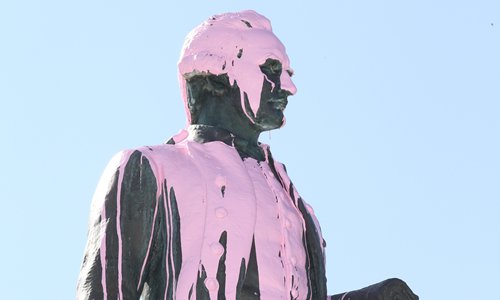
The statue of Captain James Cook in Catani Gardens, St Kilda, is seen vandalized on Thursday in Melbourne, Australia following debate about changing Australia Day from January 26. Some indigenous Australians prefer to refer to the official national day as "Invasion Day." (Photo: IC)
Rates of incarceration and suicide among Indigenous Australians have increased for the second straight year after a landmark government agreement to address disadvantage.
The Productivity Commission, Australian federal government review agency, Thursday published updated data on the Closing the Gap program.
Established in 2008, the Closing the Gap framework aims to reduce the disadvantage faced by Aboriginal and Torres Strait Islander people.
In 2020, federal state and territory governments reached an agreement with Indigenous groups on 17 new Closing the Gap targets across education, employment, justice, safety, housing, land and waters and health and well-being.
According to Thursday's data, the suicide rate for Indigenous Australians has increased from 25 per 100,000 people in 2018 to 27.1 in 2019 and 27.9 in 2020.
By comparison, the suicide rate for the entire Australian population in 2020 was 12.1 per 100,000.
By June 2021 the Indigenous incarceration rate was 2,222.7 prisoners per 100,000 people, up from 2,142.9 two years ago.
The figure is 10 times higher than that for the general population.
Productivity Commission data revealed the life expectancy for Indigenous people born in 2015-17 was 71.6 years for males and 75.6 years for females compared to 80.2 and 83.4 years respectively for non-Indigenous people.
It marks a significant improvement compared to those born between 2005-07, but the report predicted that by the end of the 21st century, Indigenous people would still be dying younger than non-Indigenous Australians.
It means the Closing the Gap program is not on track to reach its target of equal life expectancy by 2031, according to a report from the Australian Associated Press.


